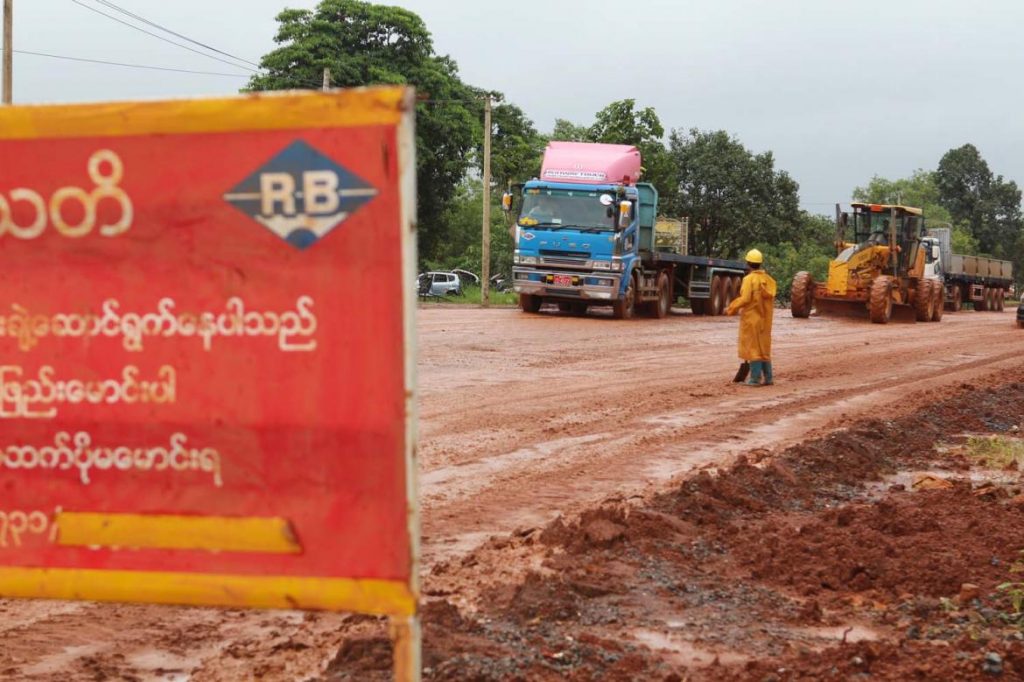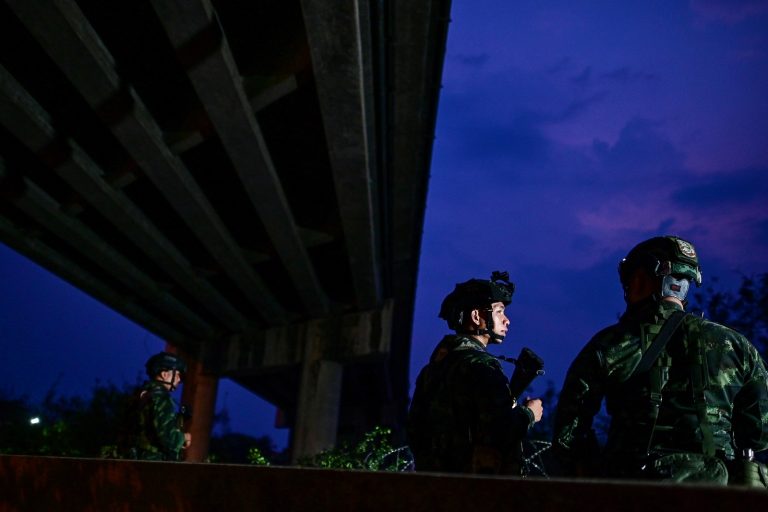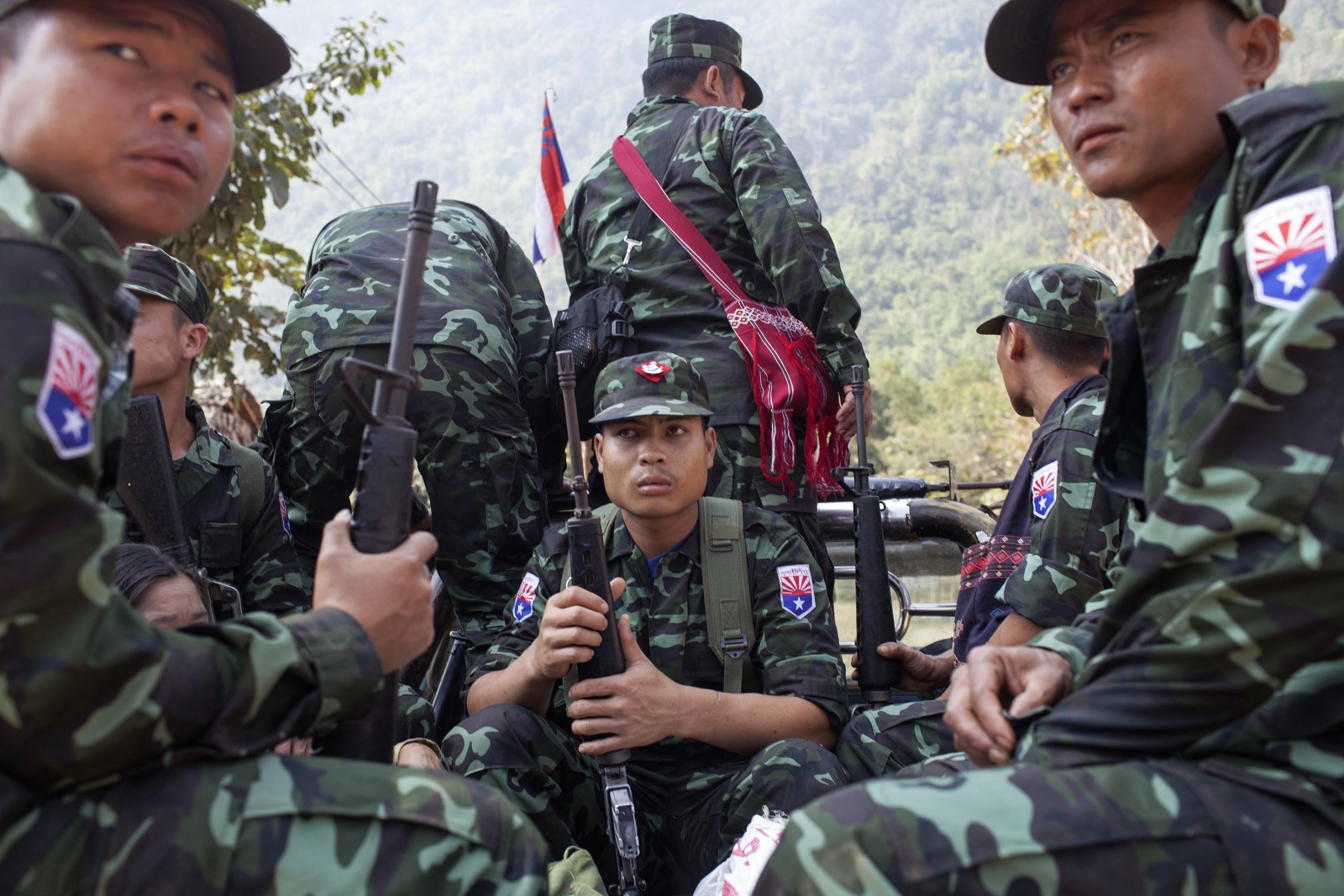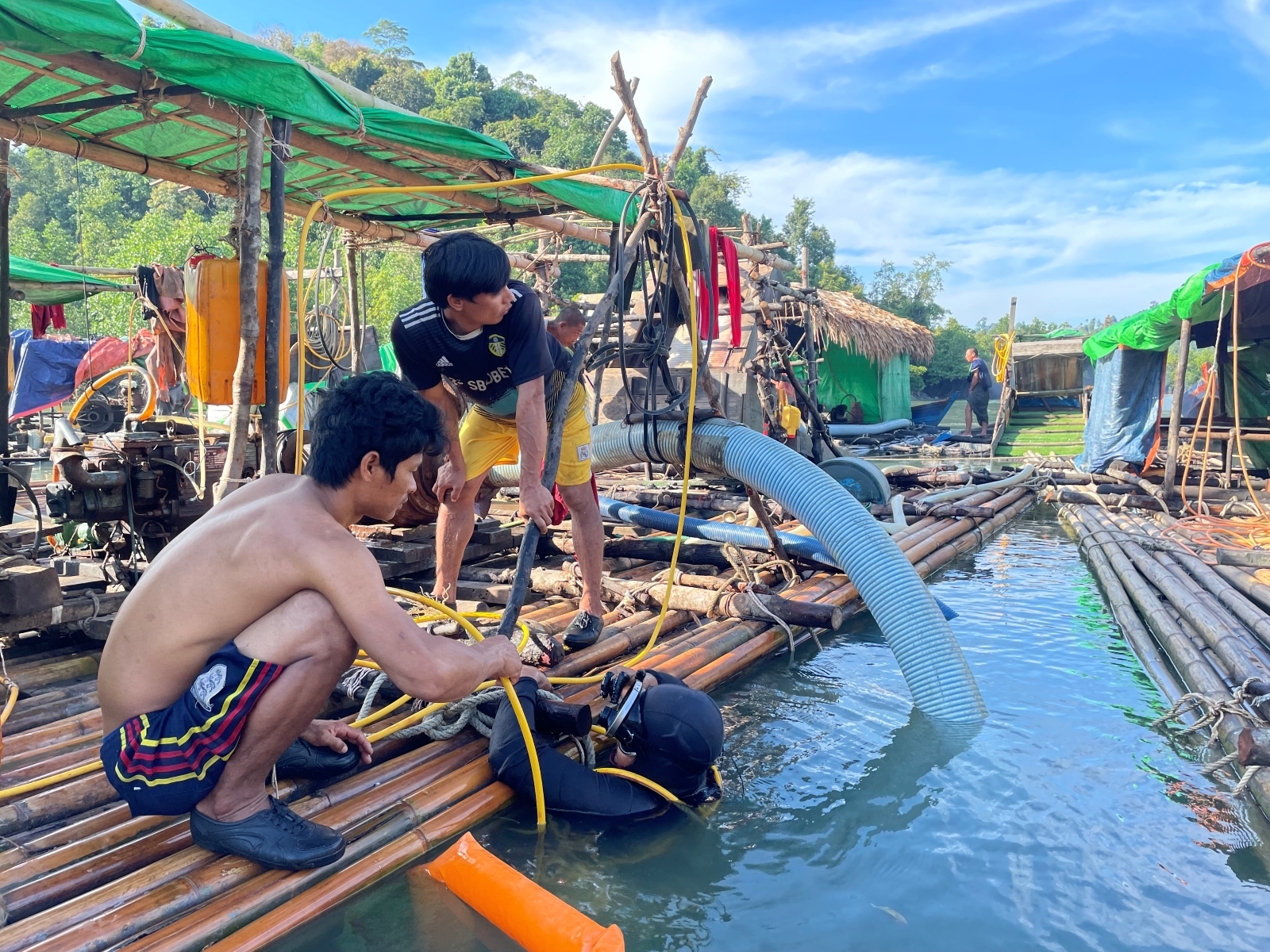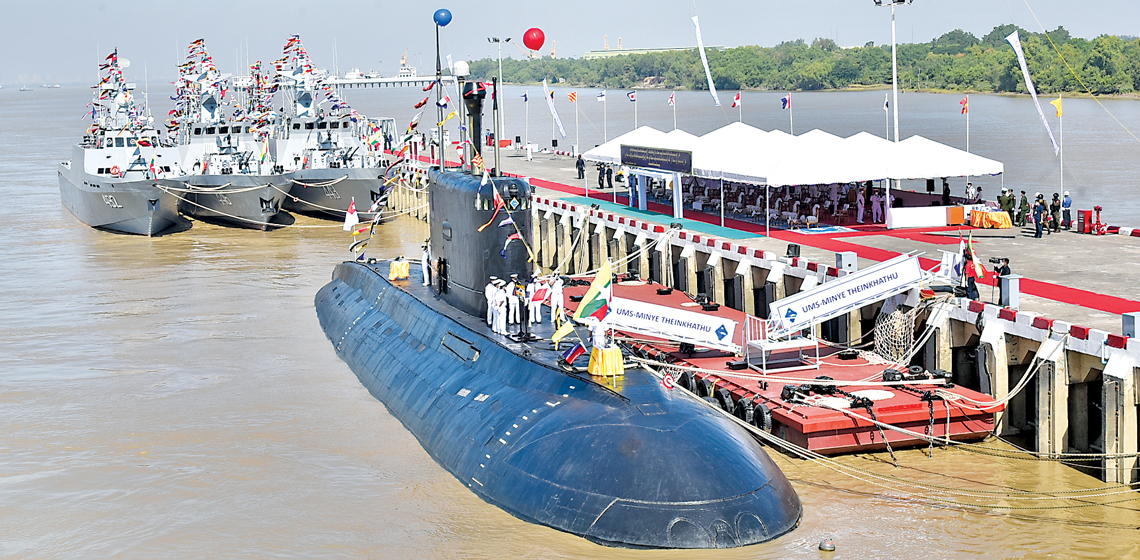In Kayin State, the upgrade of one of the country’s most important highways has been brought to a standstill and the blame game is in full swing.
By THOMAS KEAN | FRONTIER
IT CAN often seem like journalism has little impact. Even when an article causes a stir, controversies quickly fade and attention is diverted. Things return to normal; little changes. But at other times, the effects can be more far-reaching and significant than you ever contemplated.
In December 2017, Frontier published an article, “An army, a mountain and the ADB”, detailing local opposition to the use of a quarry for a highway upgrade in Kayin State.
To be funded through a US$100 million loan from the Asian Development Bank and an additional $20 million from the ASEAN Infrastructure Fund, the upgrade would close a gap in the 1450-kilometre East-West Economic Corridor linking Da Nang in Vietnam and Mawlamyine in Mon State.
The quarry at Mt Lun Nya, near Hpa-an, had been licensed to a company, Chit Lin Myaing Toyota, linked to a Kayin Border Guard Force. It then leased the site to the highway contractor, Chinese state-owned China Road and Bridge Corporation, but armed members of the BGF, which is under the command of the Tatmadaw, were providing security at the site. Locals complained they had not been consulted over the decision to use the quarry and were concerned about the environmental impact.
Support more independent journalism like this. Sign up to be a Frontier member.
The article was like a small stone being dropped into a pond. There was just a small splash at first, but it didn’t stop there; the ripples began emanating outwards.
The ADB responded immediately after publication. It said it had anticipated construction materials would be sourced from a commercial supplier and would not allow materials from the quarry to be used for the highway unless an environmental assessment was conducted and the contractor could show that people’s livelihoods would not be adversely affected.
Over the following months, the dispute grew more heated. Villagers damaged a road leading to the quarry and were charged by police. The newly elected village-tract administrator was sacked. In May, the BGF leader, Saw Chit Thu, and chief minister Nang Khin Htwe Myint visited Lun Nya separately in an effort to defuse tensions. A video of the chief minister growing frustrated under questioning from residents circulated on Facebook.
Shortly afterwards, the ADB told Frontier it had suspended payments to CRBC “due to noncompliance with ADB safeguard and government environmental requirements”. In response, the Chinese company halted construction work shortly before the rainy season beginning in June.
The half-built road – which handles one-third of Myanmar’s border trade – had become a treacherous stretch of mud, broken bitumen and pools of water, bringing traffic to a slow crawl.
In July, we got a call. The Kayin State chief minister wanted to meet us.
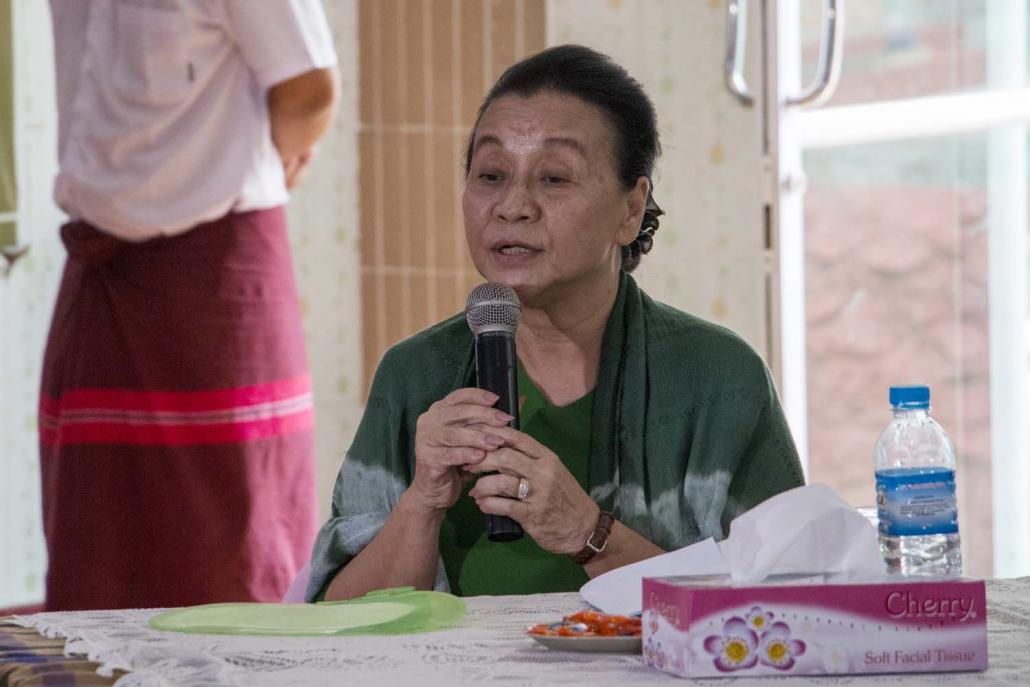
Kayin State Chief Minister Nang Khin Htwe Myint. (Nyein Su Wai Kyaw Soe | Frontier)
The blame game
With the help of a cane, Nang Khin Htwe Myint walked slowly into the meeting room at the Kayin State government office in Hpa-an.
She was cordial and polite, explaining the problems that the delays to the highway had caused. The road was in a very poor condition and income from tollgates – an important source of revenue for the state government – had declined.
She seemed more concerned about the political implications, though. The upgrade to the highway – 66.4 kilometres from Eindu, outside Hpa-an, to Kawkareik – was the state government’s major infrastructure project. Khin Htwe Myint was trying to do as much as she could for the development of the state but had almost no funds to work with.
“We’ve got no airport, railway, waterways. Only roads,” she said. “Improving road infrastructure is the number one priority of the state, followed by energy.”
“This road in particular is essential. People from across the country are relying on it,” she said.
The chief minister grew more animated as she explained how the project had been progressing “smoothly” until several NGOs and civil society groups got involved. They helped the villagers bring the issue to the media’s attention, prompting the ADB to review the use of the quarry.
This review found that the quarry had not received an environmental compliance certificate, which is issued by the Ministry of Natural Resources and Environmental Conservation according to the 2015 Environmental Impact Assessment procedure. The certificate confirms that the applicant’s initial environmental examination, impact assessment and management plan are in compliance with the Environmental Conservation Law. Khin Htwe Myint said the state government had not been aware it needed an ECC.
But the involvement of the BGF had also spooked the ADB; according to the chief minister, the bank’s board had decided earlier this year not to allow the quarry to be used for the project regardless of whether an ECC was issued for the site. (The ADB contacted Frontier after publication to clarify that the ADB board had not been involved in the project.)
“The ADB said it was because they were worried the quarry could cause conflict. But it’s impossible – that area is very peaceful,” she said. “They should have come and visited and checked on the ground. They are the ones that are most responsible for this situation.”
The involvement of the BGF in the project was no accident. Khin Htwe Myint said the Kayin State government had licensed the quarry to Chit Linn Myaing Toyota essentially to buy the group’s cooperation, to pay them off. This approach was more likely to bring peace than the Tatmadaw’s strategy of “putting pressure” on armed groups, she added. “We should cooperate to improve understanding … and let armed groups get involved in business, hire their relatives to work in the government and so on.”
The ADB did not respond to Frontier’s requests for comment. However, the project data sheet for the Eindu to Kawkareik road upgrade on the ADB website appears to confirm most of what the chief minister said. It states that in the second quarter of 2018, the ADB recommended that a new quarry site be used and warned that the processing of environmental permits may delay implementation of the project.
As of the third quarter, new quarry sites were “being considered and undergoing due diligence”, according to the project data sheet. The contractor’s environmental management plan has yet to be approved by the Ministry of Construction, “pending government’s environmental compliance requirements”.
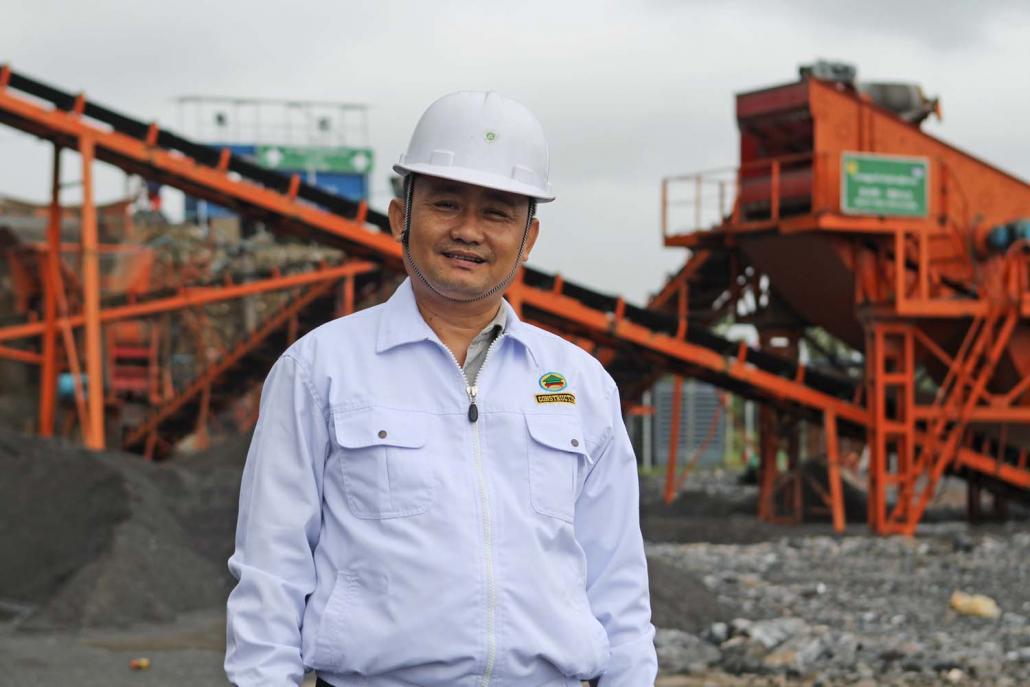
Department of Highways director U Thaung Soe Han stands in front of the silent China Road and Bridge Corporation quarry at Mt Lun Nya near Hpa-an. (Thomas Kean | Frontier)
The mess
Department of Highways director for Kayin State U Thaung Han Soe stood in the late July rain, gesturing towards the idle construction equipment. “See? Everything has stopped.”
When Frontier had visited – or attempted to visit – the quarry at Mt Lun Nya in late 2017 for our original article, we had been stopped from entering by armed BGF members. Dozens of workers wearing helmets with the CRBC logo could be seen from a distance, while the sound of bulldozers levelling the site filled the air.
Now the quarry was almost eerily quiet, as if it had been abandoned in haste. Piles of crushed rock sat underneath long conveyors, while a row of dump trucks emblazoned with the China Road and Bridge Construction logo were parked at the edge of the site, sections of which were now under water.
Thaung Han Soe said the quarry had not been used since May. Without a suitable alternative site, CRBC had stopped work; about 50 kilometres of highway that was supposed to be upgraded this year had been left in a bad state, he said.
“CRBC has prepared the road by widening it and putting soil on it but hasn’t surfaced it yet,” he said. “The condition of the road all the way [to Kawkareik] is very bad.”
The Department of Highways had arranged for us to speak to some residents from the area, but not those from Lun Nya village, which seemed to be the primary source of opposition. The speakers seemed reluctant to discuss the complaints about the quarry but insisted that they supported its use, and explained how the poor state of the highway had made life difficult for them.
“We want [construction work] to restart as soon as possible,” said U Sein Chit, a 70-year-old resident of Khaneido village.

The halt to construction work on the highway meant drivers endured terrible conditions throughout the monsoon. (Thomas Kean | Frontier)
The highway was in a terrible condition – there was no denying it. CRBC had widened and levelled the road, and prepared the existing bitumen for resurfacing. And then they’d left, leaving a red, muddy morass. It was hard to imagine anything other than a four-wheel-drive making it through, although we did see small sedans, trucks carrying containers bound for the border and plenty of motorbikes braving the conditions. Of course, many had no choice – there was no alternative route.
Despite having forced the closure of the quarry, Lun Nya residents were also far from happy with the outcome.
Speaking to Frontier in late July, village administrator U Saw Aye Maung said the contractor should not have left the road in its half-built state. “They have to continue working on the road until it’s finished, otherwise everybody will be in trouble,” he said.
He expressed doubt that the project had stopped because of the activities of civil society groups and media coverage. “I think operations stopped at the quarry about a month ago when it started raining heavily, but we still see trucks going in and out to load up with stone,” he said. “But we really don’t know the reason why everything has stopped … I wish the government would hold a meeting with us to explain whether the project has stopped, and why.”
They did come to explain – three months later. By this time the monsoon season had ended and the road was now so dusty that it had to be watered regularly, residents told Frontier.
On November 1, Khin Htwe Myint again came to Lun Nya village. According to Saw Hla Ngwe, a resident who has led the campaign against the quarry, she said it was their fault that construction work had stopped.
“Nang Khin Htwe Myint told us that Kayin State’s economy had slowed down because of the halt to the highway,” he said. “We responded that we were not against the project, we just wanted to prevent environmental damage to Mt Lun Nya.”
The fall out
How did Kayin State end up with a half-built highway? And when blame is apportioned, who deserves the largest share?
There’s little doubt that if the residents had not complained, with the help of civil society groups and the media – least of all Frontier – the highway would be in a much better state and well on the way to completion. A miserable monsoon season for those travelling between Eindu and Kawkareik could have been avoided. We must acknowledge our own role in bringing the project to a standstill.
But the government’s deal with the Border Guard Force was always going to be sensitive for an international lender like the ADB; the government can’t deny that it also failed to adhere to its own environmental laws and regulations. It was either naïve or foolhardy, and by cutting corners it put the project at risk. Given that, it seems misplaced to blame the media or civil society for drawing attention to these flaws; after all, our role in a democracy is to ensure accountability and transparency, and act as a check on other institutions, including the government.
The government also seems to have been slow to recognise the seriousness of the ADB’s concerns. In fact, it still seems to be in denial about the need to choose an alternative quarry or to source crushed rock from commercial suppliers so the project can be completed. Until a solution is found, the highway will remain in its present state of disrepair.

Residents of Lun Nya have used the mountain for small-scale quarrying for years but were alarmed when they learned it would be the source of large amounts of stone for the highway. (Nyein Su Wai Kyaw Soe | Frontier)
The disaster in Kayin State also reflects the NLD’s style of governance. Had it placed greater priority on communicating or consulting with those affected – instead of blaming them for speaking out – then perhaps some of the damage could have been avoided.
Sadly, the conflict does not seem to have prompted any introspection on this point. The villagers’ complaints, the activities of civil society groups and the media, the stance of the ADB – for Khin Htwe Myint, this was all an unreasonable nuisance to the NLD’s ambitions.
When I asked how she balanced the rights of individuals to speak out versus the needs of the community, she responded: “You don’t need to balance them because this project didn’t affect the community negatively.”
The experience at Lun Nya is unlikely to change the government’s approach. Instead, it will probably further entrench its mistrust of civil society, the media and community activism.
At one point during our interview, Khin Htwe Myint said, “They should consider the human rights of everyone, not just a few.” Who is “they”? She raised her eyebrows, tilted her head; a disapproving frown crossed her face. Keeping her eyes on the translator, she extended a finger in my direction.
But her frustration with the ADB was, if anything, greater. Khin Htwe Myint said the loan had been sought by the previous government and noted that the interest rate – 1.5 percent a year after an eight-year grace period of 1.0 percent – was higher than for a concessional loan from the Japan International Cooperation Agency, which is typically 0.01 percent.
She didn’t need to say that a Japanese or Chinese concessional loan would also come with few social and environmental safeguards – fewer potential snags to derail a project. There were no such delays when building the Myawady to Kawkareik section of the highway. Completed in 2015, it was financed with a loan from Thailand’s Neighboring Countries Economic Development Cooperation Agency.
In the future, the government might view financing certain projects through loans from institutions such as the World Bank and ADB as simply not worth the effort. – Additional reporting by Su Myat Mon
Clarification, December 17: This article has been amended to clarify the interest rate on the ADB loan.


